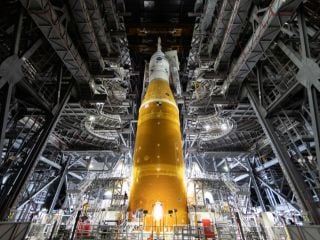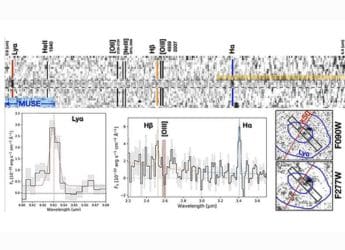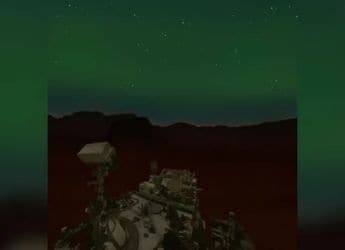- Home
- Science
- Science News
- JWST Identifies Compact, Metal Poor Star Forming Region Tracing Back to Early Universe
JWST Identifies Compact, Metal-Poor Star-Forming Region Tracing Back to Early Universe
JWST discovers LAP2, a faint star-forming complex that may resemble early universe conditions

Photo Credit: Wikimedia Commons
JWST reveals LAP2, a faint star-forming complex behind Abell 2744 with low metallicity
A group of astronomers from the James Webb Space Telescope (JWST) have found a faint star-forming section that offer clues regarding conditions similar to what we've seen in the early universe. The discovery, called LAP2, was reported in a paper posted on the arXiv preprint server Tuesday. The find represents an amazing chance to probe a system with an extraordinarily low abundance of metals and watch how the first stars influenced later parts of the universe. The system probably looked like a stellar nursery shortly after the Big Bang, researchers mentioned.
JWST Reveals LAP2, a Tiny Metal-Poor Star-Forming Complex Behind Abell 2744
As per the study led by Eros Vanzella of the Astrophysics and Space Science Observatory in Bologna, Italy, LAP2 was detected behind the massive galaxy cluster Abell 2744, which acted as a natural gravitational lens. Resolved spectroscopy reveals a 100 km/s RV velocity, and UV (luminosity) estimates can provide metal abundance measures (< ∼0.6%) which are five times more metal poor than any other known galaxy.
Astronomers have also discovered that LAP2 is extremely young, less than ten million years old, and with a mass between 10 and 100 thousand times the one of our sun: it's just entered the main sequence phase in its very long life cycle, preserving almost all its pristine nature.LAP2 is a rare low-mass, most importantly very low-metallicity target that JWST will be required to measure metallicities and star-formation histories in order to understand the progenitor systems of gravitational wave sources.
Next step would be to apply the method to real data, but that's easier said than done as oxygen and metallicity abundances are two sides of coin – not independent. This degeneracy complicates attempting to test or calibrate the Stellar Population Models which are used to drive Galactic Chemical Evolution (GCE).
For the latest tech news and reviews, follow Gadgets 360 on X, Facebook, WhatsApp, Threads and Google News. For the latest videos on gadgets and tech, subscribe to our YouTube channel. If you want to know everything about top influencers, follow our in-house Who'sThat360 on Instagram and YouTube.
Related Stories
- Samsung Galaxy Unpacked 2025
- ChatGPT
- Redmi Note 14 Pro+
- iPhone 16
- Apple Vision Pro
- Oneplus 12
- OnePlus Nord CE 3 Lite 5G
- iPhone 13
- Xiaomi 14 Pro
- Oppo Find N3
- Tecno Spark Go (2023)
- Realme V30
- Best Phones Under 25000
- Samsung Galaxy S24 Series
- Cryptocurrency
- iQoo 12
- Samsung Galaxy S24 Ultra
- Giottus
- Samsung Galaxy Z Flip 5
- Apple 'Scary Fast'
- Housefull 5
- GoPro Hero 12 Black Review
- Invincible Season 2
- JioGlass
- HD Ready TV
- Laptop Under 50000
- Smartwatch Under 10000
- Latest Mobile Phones
- Compare Phones
- Oppo K13s
- Redmi 15R 5G
- Vivo Y31 Pro 5G
- Vivo Y31 5G
- Oppo F31 5G
- Oppo F31 Pro 5G
- Oppo F31 Pro+ 5G
- Realme P3 Lite 5G
- Acer Nitro V 16S (2025)
- Acer Nitro V 16 (2025)
- Moto Pad 60 Neo
- Xiaomi Moaan InkPalm Mini Plus 2
- NoiseFit Endeavour Pro
- Apple Watch SE 3
- Elista QLED Google TV
- TCL C72K QD Mini‑LED TV
- Asus ROG Ally
- Nintendo Switch Lite
- Haier 1.6 Ton 5 Star Inverter Split AC (HSU19G-MZAID5BN-INV)
- Haier 1.6 Ton 5 Star Inverter Split AC (HSU19G-MZAIM5BN-INV)

















